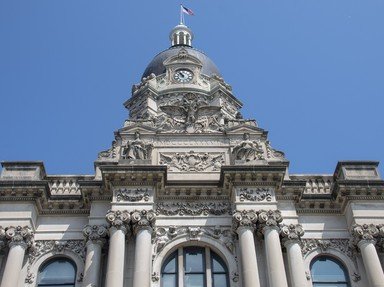Quiz Answer Key and Fun Facts
1. Who headed the Treasury Department unit that conducted the criminal investigation of the financial records of Chicago crime boss, Al Capone?
2. In which city did the infamous "Saint Valentine's Day Massacre" occur on February 14, 1929?
3. Bernard V. Cloonan, Samuel M. Seager, Lyle Chapman, and Paul W. Robsky were four of eleven men who played a prominent role during the Prohibition Era. Who were they?
4. Which gangster is widely credited with first coining the phrase "G-Men", in reference to federal law enforcement agents?
5. In all, how many years did Al Capone spend in prison after being convicted of charges in Federal Court?
6. Which well known gangster died in the United States Penitentiary (USP) Leavenworth, in Leavenworth, Kansas, on his 59th birthday?
7. What color dress was worn by the mystery lady who conspired with federal agents to capture or kill notorious public enemy, John Dillinger?
8. Which 1930's high profile Prohibition Era figure died of a self inflicted gunshot wound in 1960?
9. Which public enemy figure was reportedly arrested personally by FBI Director, J. Edgar Hoover?
10. One of the most infamous crime figures of the 20th Century, Al Capone, died of a heart attack in 1947, in the prison hospital at the United States Penitentiary (USP) Leavenworth, in Kansas.
Source: Author
MaceoMack
This quiz was reviewed by FunTrivia editor
bloomsby before going online.
Any errors found in FunTrivia content are routinely corrected through our feedback system.
